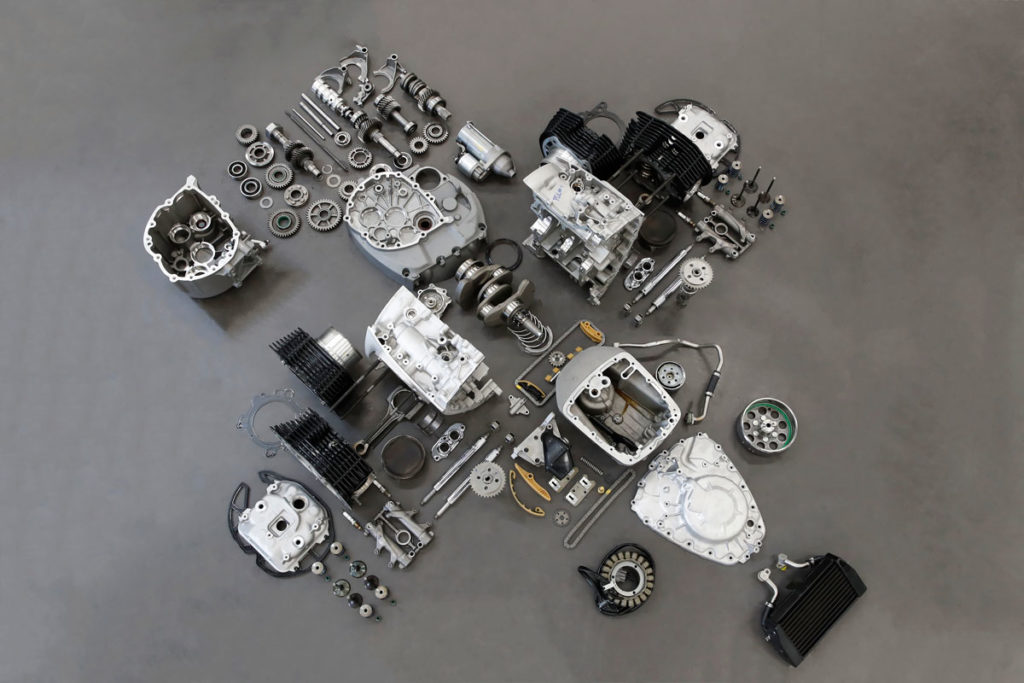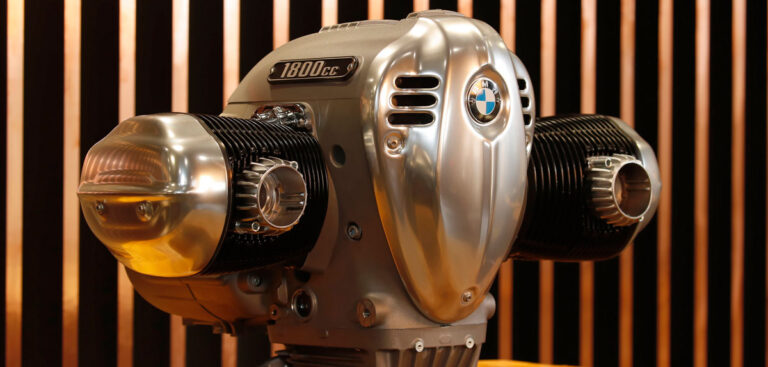At the debut of BMW Motorrad’s Concept R 18, the company also unveiled a state-of-the-art boxer engine. Claimed by BMW to be the highest-capacity two-cylinder boxer engine ever, the 1,802cc Big Boxer will output 91ps at 4,750rpm.
With an OHV valve drive along with a separate engine and transmission housing, the new boxer engine has the same structural features that distinguished the very first BMW Motorrad boxer engine, which at that time had laterally controlled valves.
The twin-cylinder engine has a 107.1mm bore and a 100mm stroke, while maximum torque of 158Nm is available at 3,000rpm. More than 150Nm is available from 2,000rpm to 4,000 rpm. The maximum engine speed is 5,750rpm, while the idling speed is 950rpm.
BMW’s Big Boxer is air/oil cooled, has large ribbed cylinders and cylinder heads and weighs 110.8kg including gearbox and intake system. It has a vertically split aluminum engine housing.
Unlike the classic air-cooled two-valve boxer engines made by BMW Motorrad, however, the crankshaft – forged from quenched and tempered steel – has an additional main bearing at the center, which was necessary due to the cylinder volume in order to prevent bending vibrations of the crankshaft.
Lubricating and cooling oil is supplied by a wet sump lubrication system with a two-stage oil pump via sleeve-type chain driven by the crankshaft.
Although the Big Boxer has four valves, dual ignition, a modern combustion chamber architecture, intake manifold injection and the BMS-O engine management system, it uses the classic OHV configuration for its valve drive.
The two camshafts are positioned to the left and right above the crankshaft. The advantage of this is the shorter pushrods. This makes for reduced moving masses, minimized deflections and lower linear expansions, as well as a generally stiffer valve drive with improved control precision and higher speed stability.



